- It prevents the meat from absorbing too much smoke so it doesn’t turn out bitter and
- It keeps the meat nice and moist, so it comes out really tender & juicy.
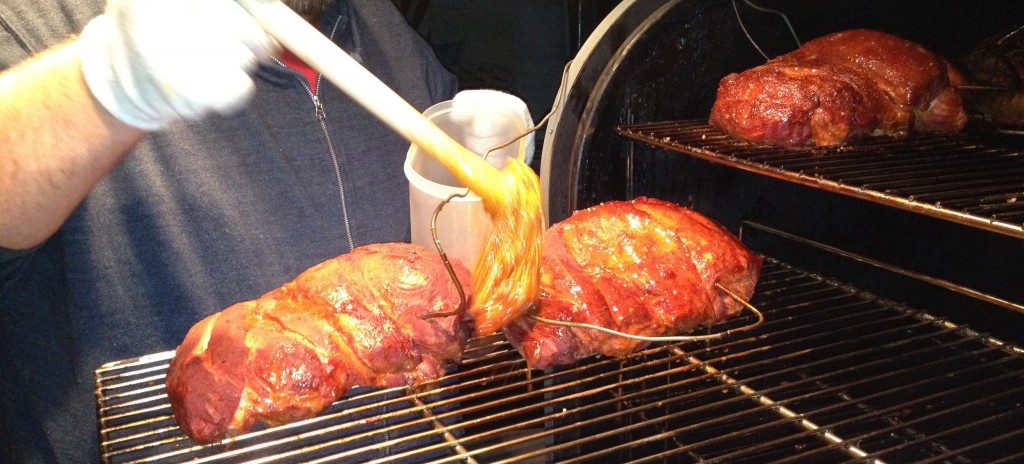 You can replace moisture in a couple of ways. Injecting before the meat goes on the smoker, basting or mopping as it cooks, and you can even do multiple injections during the cooking process. When you quit adding wood and after the meat gets to 180 degrees are good times to add injection.
Also, when I know that I’m not going to wrap, I don’t get near as aggressive with the trimming because fat adds a ton of moisture.
Cook Time:
Everyone has heard of the dreaded “stall”. It’s the point in the cooking process where big meats plateau and get stuck… sometimes for hours.
The stall usually occurs around 170 degrees, and if you’re not ready for it it’ll drive you crazy. There’s nothing worse than staring at the same temperature while the clock is running out on you.
Unfortunately, there is no way to avoid the stall especially if you’re not wrapping. The best option is to give yourself plenty of extra cook time to deal with it. Or you can crank the temps up and push through it, but you do risk drying out your barbecue this way. (this is wear that last injection can come in handy)
Color and Appearance:
When you wrap meat, it usually comes out looking pretty ugly. And not wrapping can produce a better looking finished product. This is one big advantage for the no wrap method.
You’re going to get a better bark looking bark that is hard to beat. It’s a true bark that isn’t soft or mushy.
The trick here is to not let it get too dark.
So once again, your basting is crucial. You have to continually spritz or mop through the entire cooking process to ensure it turns out a pretty mahogany color… and not burnt-tire black.
If it does start turning dark, you can always shield or tent the meat with foil. We’re not wrapping here, just laying a strip of foil over the meat for a little protection.
If you know how to do it, there is no reason why the no-wrap method can’t turn out just as good of Que as wrapped.
In fact, when I’m doing large cooks I never wrap. There is no way I’m taking the extra time to wrap 100 or more butts because foil ain’t cheap…
You can replace moisture in a couple of ways. Injecting before the meat goes on the smoker, basting or mopping as it cooks, and you can even do multiple injections during the cooking process. When you quit adding wood and after the meat gets to 180 degrees are good times to add injection.
Also, when I know that I’m not going to wrap, I don’t get near as aggressive with the trimming because fat adds a ton of moisture.
Cook Time:
Everyone has heard of the dreaded “stall”. It’s the point in the cooking process where big meats plateau and get stuck… sometimes for hours.
The stall usually occurs around 170 degrees, and if you’re not ready for it it’ll drive you crazy. There’s nothing worse than staring at the same temperature while the clock is running out on you.
Unfortunately, there is no way to avoid the stall especially if you’re not wrapping. The best option is to give yourself plenty of extra cook time to deal with it. Or you can crank the temps up and push through it, but you do risk drying out your barbecue this way. (this is wear that last injection can come in handy)
Color and Appearance:
When you wrap meat, it usually comes out looking pretty ugly. And not wrapping can produce a better looking finished product. This is one big advantage for the no wrap method.
You’re going to get a better bark looking bark that is hard to beat. It’s a true bark that isn’t soft or mushy.
The trick here is to not let it get too dark.
So once again, your basting is crucial. You have to continually spritz or mop through the entire cooking process to ensure it turns out a pretty mahogany color… and not burnt-tire black.
If it does start turning dark, you can always shield or tent the meat with foil. We’re not wrapping here, just laying a strip of foil over the meat for a little protection.
If you know how to do it, there is no reason why the no-wrap method can’t turn out just as good of Que as wrapped.
In fact, when I’m doing large cooks I never wrap. There is no way I’m taking the extra time to wrap 100 or more butts because foil ain’t cheap…
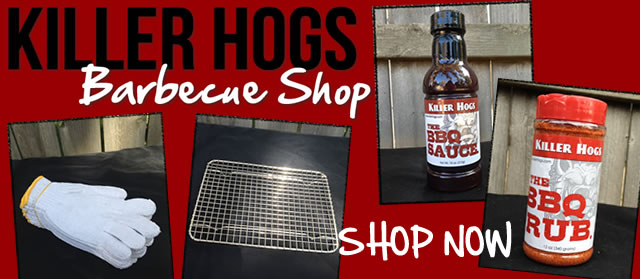 Malcom Reed
Connect on Facebook
Follow me on Twitter
Subscribe to my YouTube Channel
Find me on Google+
Follow me on Instagram
Malcom Reed
Connect on Facebook
Follow me on Twitter
Subscribe to my YouTube Channel
Find me on Google+
Follow me on Instagram
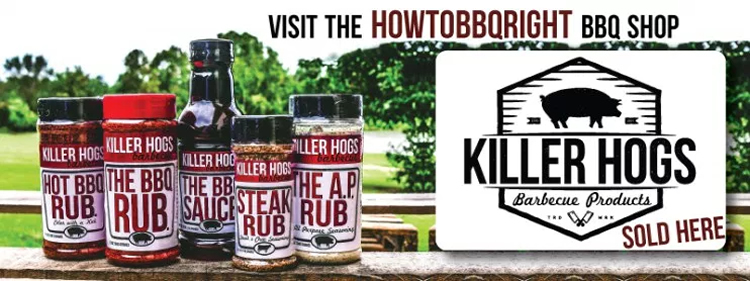
Have a Question About This Recipe?
Connect with us in our HowToBBQRight Facebook group for recipe help, to share your pictures, giveaways, and more!

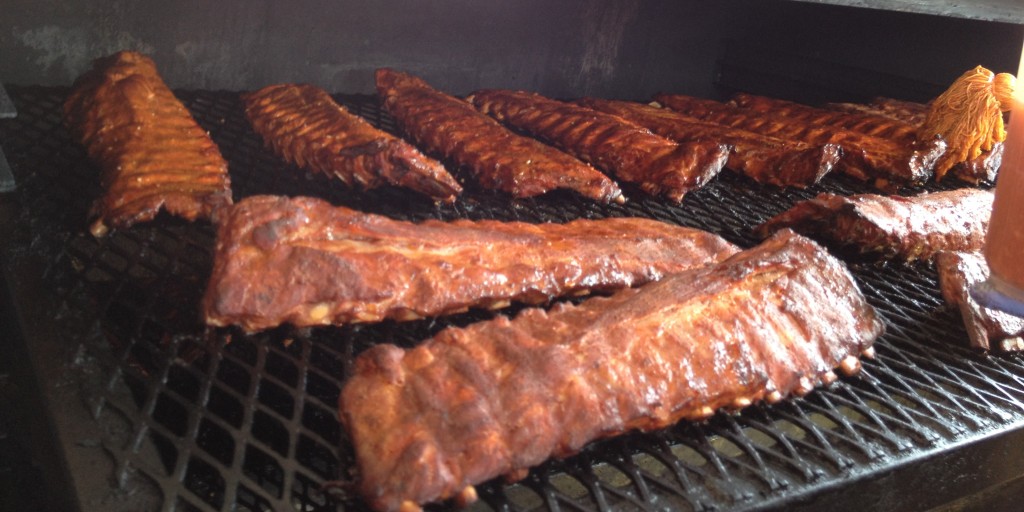
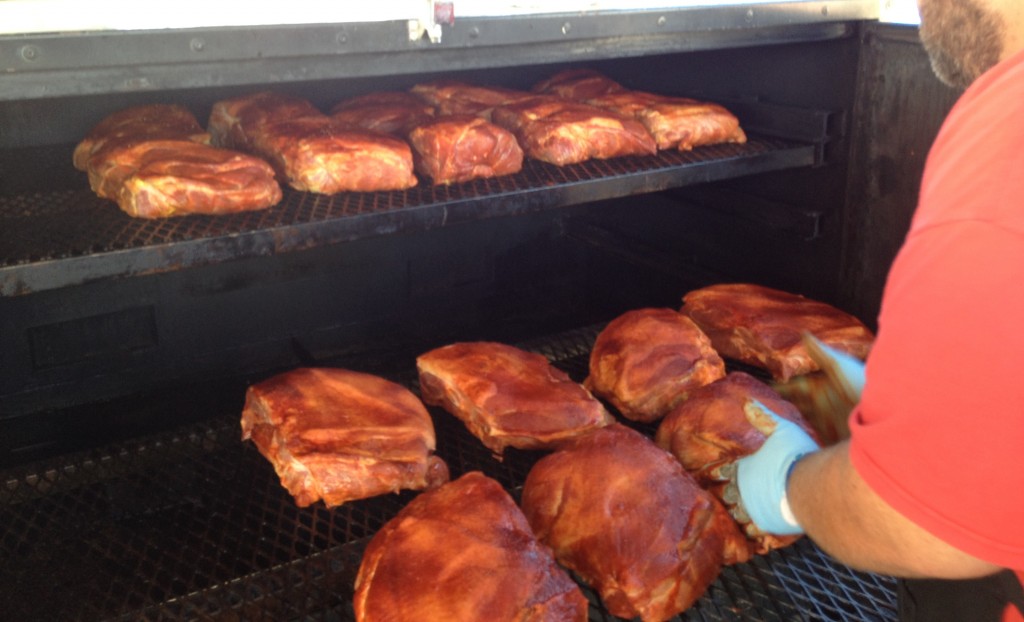
I LOVE your site, you have never mentioned anything about marinating or rather I can not find anything on it. Do you recommend it for grilling and smoking? If so, what do you use to marinate your ribs and chicken in?
I’ve never been a fan of marinate my ribs. But with chicken I will either brine then in a salt/sugar solution or if I’m just cooking at home, I’ve been known to marinade them in Italian dressing.
OBTW, I’ve been on the site for about three hours, it is so addictive. Do you ever make it to NORCAL? Northern Cali
We’d like to get up to Laughlin, NV later this year. But never cooked in NORCAL
Love all your videos and tips… My question is. Mopping vs Spritzing?..
As long as you can add moisture during the cook – it comes down to personal preference.
love watching your videos. what are your thoughts about wrapping I’m butcher paper. I’ve used both foil and paper and while the foil does hold more moisture, I find it easier to over cook your meat in it. any suggestions would be great.
I like and use them both – it all depends on how I’m cooking it and what I want the finished product to be.
Heya Malcolm, I am new to BBQ and a big fan of you and your products.
When using a pellet cooker (I have a Traeger) is there really a big risk of getting “too much smoke”?
I’ve always wrapped my ribs, but wasn’t really satisfied with the texture – they seem more like steamed ribs to me, instead of smoked. I recently tried a half slab naked alongside some wrapped. I thought the unwrapped were the best I ever made. Maybe I just got lucky. Any tips for unwrapped ribs?
With a pellet smoker you’re not as likely to get “too much” smoke. I really like the no wrap ribs on a pellet smoker. The texture is great and you don’t get that “steamed” effect. You can also try wrapping in butcher paper. It absorbs moisture and gives a great texture.
Hey malcom, when doing no wrap ribs on a pellet smoker, when and how often do you recommend spritzing?
Hi. New to your site. I have a Lang smoker. Love it!! Still learning how to use it. Any tips with ribs? I use the 3-2-1 method. Used to wrap but not anymore. Any tips on getting a good bark on ribs?